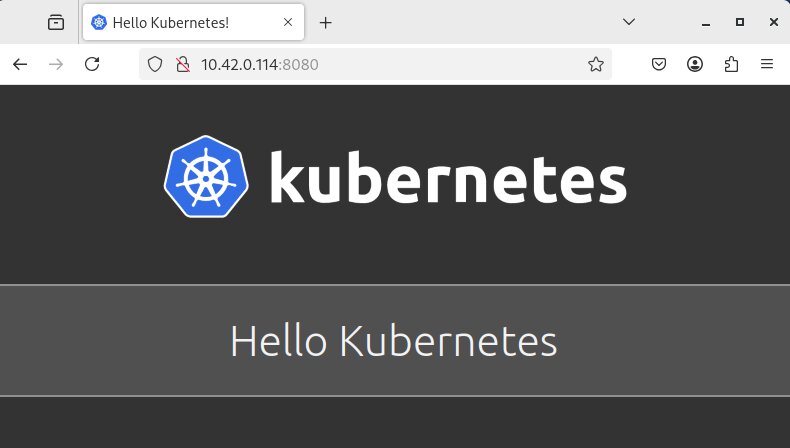K3s Deployment
Introduction
K3s is a lightweight version of Kubernetes. It is easy to install and requires only half the memory of Kubernetes, making it suitable for resource-constrained environments, especially for use cases like edge computing, IoT, and others.
Deployment Guide
Prepare the Environment
First, ensure that the network of the cluster is working correctly and that it can access the internet. You can SSH into each machine in the cluster to execute the subsequent installation commands. Make sure that the IP addresses of the master node and worker nodes are fixed, and that they can access each other over the network.
Install K3s (Master Node)
The installation of K3s is very simple. Just run the following command on the master node:
curl -sfL https://get.k3s.io | sh -
If the download is slow, you can speed up the installation by using the following command:
curl -sfL https://rancher-mirror.rancher.cn/k3s/k3s-install.sh | INSTALL_K3S_MIRROR=cn sh -
This command will automatically download and install K3s. After the installation is complete, check if the K3s service is running with the following command:
sudo systemctl status k3s
If it shows active (running), K3s has started successfully.
sudo systemctl status k3s
● k3s.service - Lightweight Kubernetes
Loaded: loaded (/etc/systemd/system/k3s.service; enabled; preset: enabled)
Active: active (running) since Mon 2025-02-17 12:07:15 CST; 3h 38min ago
Docs: https://k3s.io
Process: 8803 ExecStartPre=/bin/sh -xc ! /usr/bin/systemctl is-enabled --quiet nm-cloud-setup.service 2>/dev/null (code=exited, status=0/SUCCESS)
Process: 8805 ExecStartPre=/sbin/modprobe br_netfilter (code=exited, status=0/SUCCESS)
Process: 8808 ExecStartPre=/sbin/modprobe overlay (code=exited, status=0/SUCCESS)
Main PID: 8810 (k3s-server)
Tasks: 32
Memory: 583.2M
CPU: 29min 49.755s
CGroup: /system.slice/k3s.service
├─8810 "/usr/local/bin/k3s server"
└─8895 "containerd "
Install K3s (Worker Nodes)
When installing K3s on the worker nodes, you need to connect them to the master node. Run the following command on the worker node to install K3s:
curl -sfL https://get.k3s.io | K3S_URL=https://<MasterNodeIP>:6443 K3S_TOKEN=<MasterNodeToken> sh -
In the command above, replace 主节点IP with the master node's IP address, and MasterNodeIP with the token obtained from the master node. You can retrieve the token by running the following command on the master node:
sudo cat /var/lib/rancher/k3s/server/node-token
After installation is complete, verify that the worker node has successfully joined the cluster by running:
sudo kubectl get nodes
If the worker node appears in the list with a status of Ready, it means the worker node has successfully joined the cluster.
sipeed@lpi3h-a2d1:~$ sudo kubectl get nodes
NAME STATUS ROLES AGE VERSION
lpi3h-1967 Ready <none> 20h v1.31.5+k3s1
lpi3h-231e Ready <none> 20h v1.31.5+k3s1
lpi3h-4782 Ready <none> 56m v1.31.5+k3s1
lpi3h-a2d1 Ready control-plane,master 23h v1.31.5+k3s1
lpi3h-ba13 Ready <none> 19h v1.31.5+k3s1
lpi3h-c06b Ready <none> 21h v1.31.5+k3s1
Deploy an Application
We will create a configuration file to run a K3s container.
nano hello-kubernetes.yaml
The file content is as follows:
apiVersion: apps/v1
kind: Deployment
metadata:
name: hello-kubernetes
spec:
replicas: 1
selector:
matchLabels:
app: hello-kubernetes
template:
metadata:
labels:
app: hello-kubernetes
spec:
containers:
- name: hello-kubernetes
image: paulbouwer/hello-kubernetes:1.10.1
env:
- name: MESSAGE
value: "Hello Kubernetes"
Then, use this configuration file to start a container:
sudo kubectl apply -f hello-kubernetes.yaml
Check the status of the pods:
sudo kubectl get pods -o wide
NAME READY STATUS RESTARTS AGE IP NODE NOMINATED NODE READINESS GATES
hello-kubernetes-7fbb7f4899-zqs5x 1/1 Running 0 2m39s 10.42.0.114 arch <none> <none>
Finally, access the application via a browser at 10.42.0.114:8080




 English
English Translate
Translate